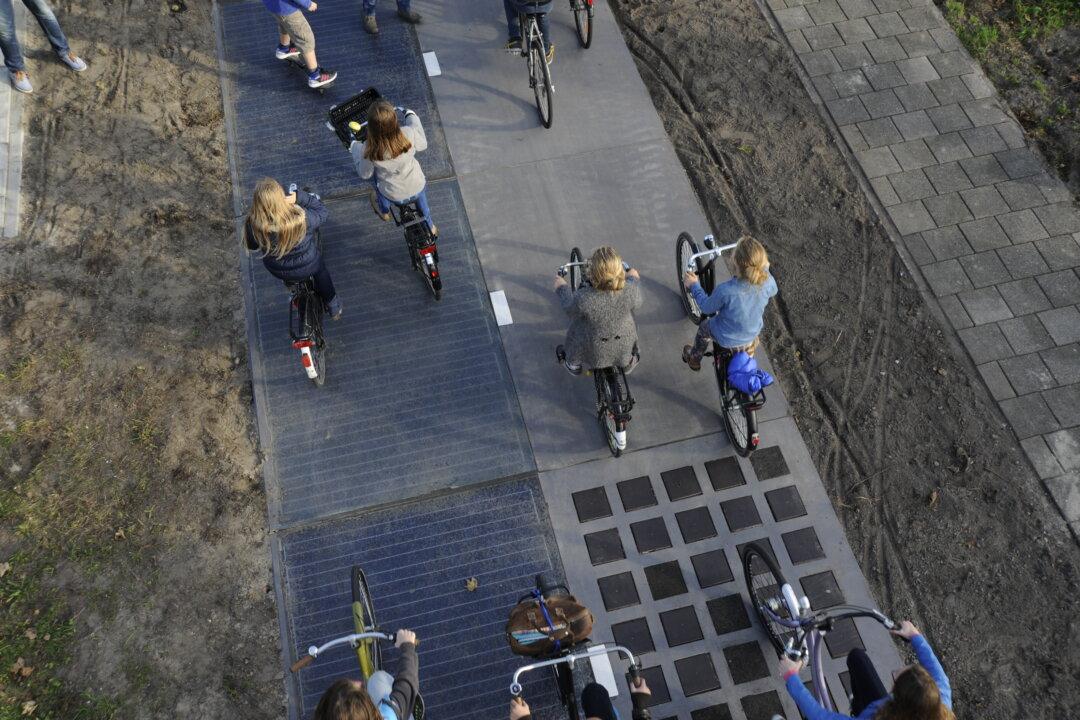Six months ago, the Netherlands experimented with adding solar-energy generating functions to a slab of bike pathway. Now, the project, based in the city of Krommenie, has been declared a roaring success.
The 230 feet stretch of solar bike lanes generated 3,000 kilowatt-hours of electricity in the past half-year, enough to power a single-person household for an entire year, reported Al Jazeera.

Cyclists use the SolaRoad, the first road in the world made of solar panels, during the official opening in Krommenie on November 12, 2014. Evert Elzinga/AFP/Getty Images





